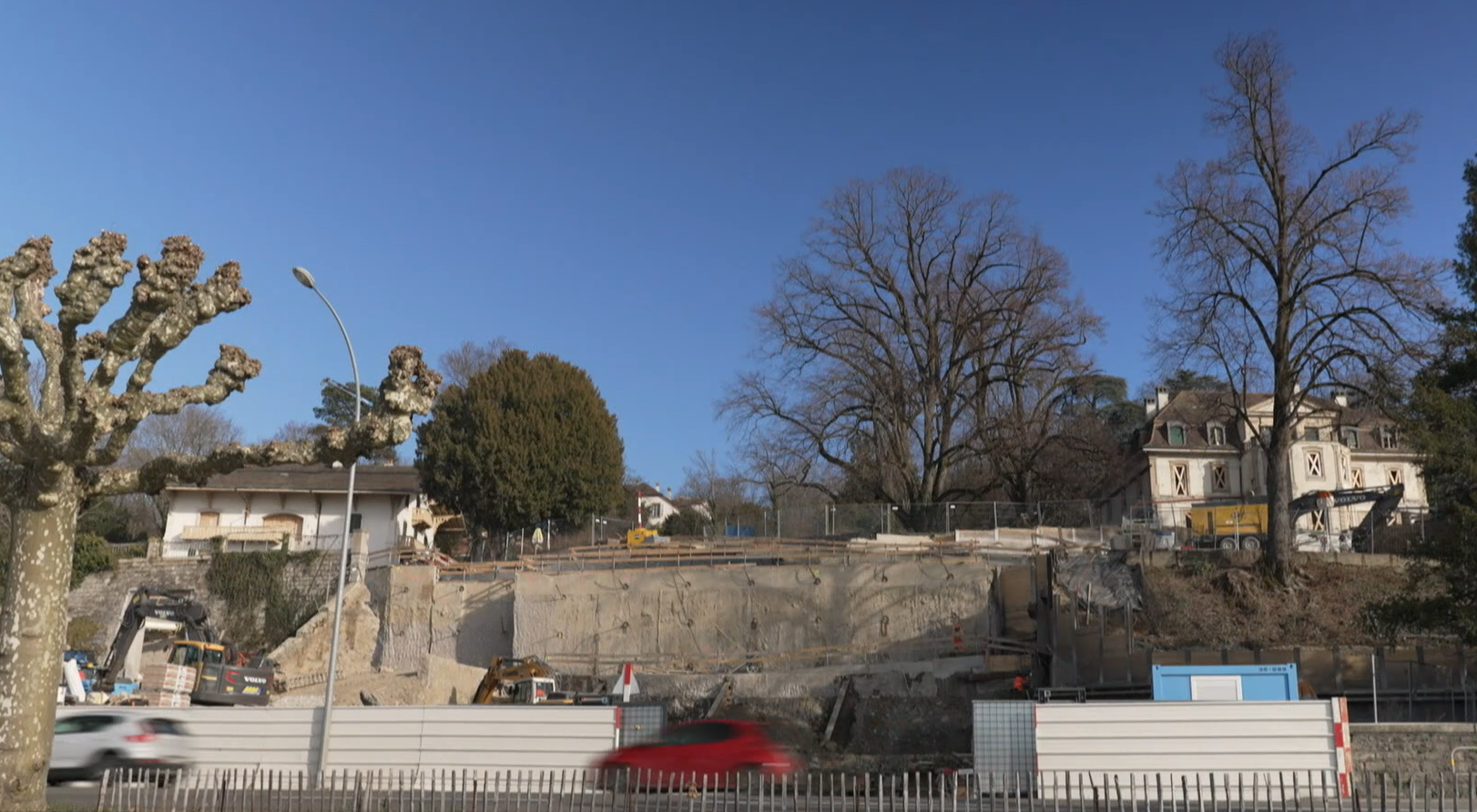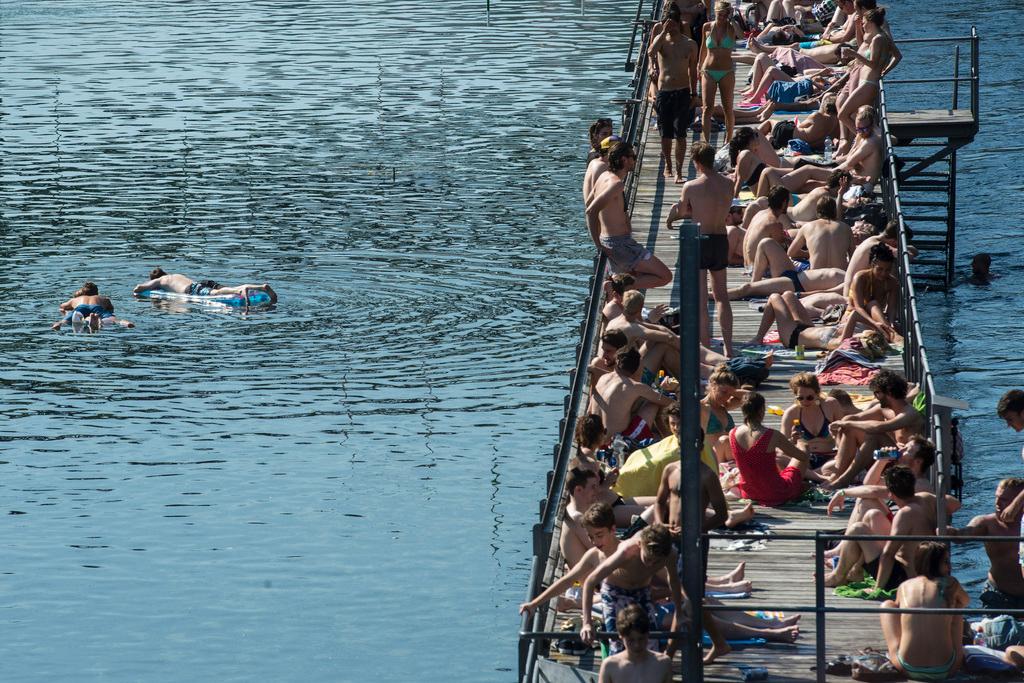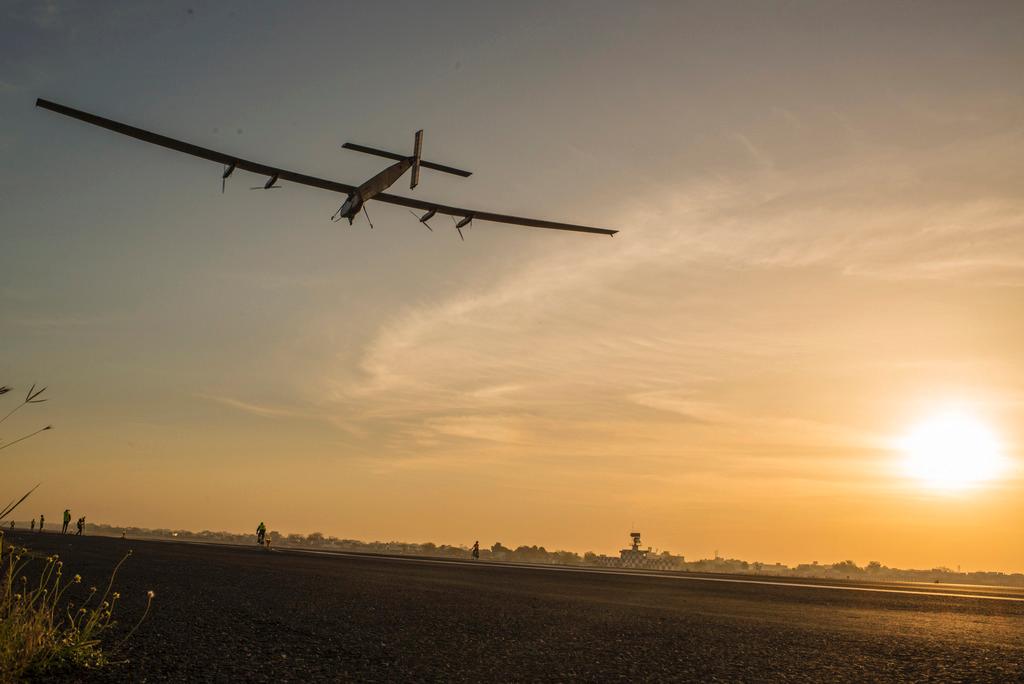Swiss champion solar power but struggle with targets
The world’s largest off-grid solar panel system on the roof of a sports stadium recently started operating in the town of Biel. But Switzerland is far from a world leader in solar energy.
The country has some way to go to reach its target of producing 20% of its electricity with photovoltaic technology.
Standing in front of the new Tissot Arena, it is difficult to see the 8,100 solar panels on the roof. Only a climb to the special visitor’s platform gives a full view of the technical installation measuring 16,000 square metres.
The power produced on the roof can provide enough electricity for 500 households with four people and over an entire year.
Or as Heinz Binggeli, director of Biel’s utilities says: “If the panels are at their maximum capacity they power 2,000 raclette ovens,”referring to the device used to melt the cheese for a traditional Swiss dish.
Made in China
It took barely six weeks to install the panels. Imported from China, they were simply set on the roof, without additional fitting, by a local company. The Chinese producers made the best offer and there are no manufacturers left in Europe, according to Binggeli.
The installation is state-of-the-art. The modules face towards the southeast, and not southwards as one might expect to maximise the power production. However, there are no batteries connected to the panels, as existing systems are considered too costly and not very efficient.
The power produced is immediately fed into the local grid and not used to light the football pitch and ice-hockey arena included in the complex. The building is due to be officially opened at the end of September.
During the unusual heatwave in July, the solar panels only worked at a reduced level as temperatures above 30°C have a negative impact.
Making the stadium a world champion is primarily symbolic for Binggeli. “We wanted to contribute to the shift to renewable energy.”

More
Stadium sets record – for solar panels
The town benefited from low prices in photovoltaic installations. These amounted to CHF3 million ($3.1 million) instead of CHF5 million as planned in 2007. Furthermore, the panel surface is 5,000m2 larger than initially projected. Authorities estimate an annual revenue of CHF200,000 for the operators, allowing the investment to be gradually written off within 20 years.
As Binggeli points out, such investment only pays off with the support of a government-funded programme aimed at promoting electrical production from renewable energy sources. It covers the difference between the production cost and the market price.
For David Stickelberger, director of Swissolar, an association of the solar power industry, the financial support is crucial for photovoltaic projects, which require investments worth several million francs.
“These roof panels show the way into the future of solar energy in Switzerland. But the market needs a clear signal from politicians to continue its growth strategy,” Stickelberger says.
Waiting list
Small off-grid solar energy systems have been on the rise, according to a market survey. Since April 2014, they can benefit from government funding for up to 30% of building costs. In contrast, large installations on factory roofs, public buildings or in agriculture have suffered a setback.
Due to spending cuts, government funds are no longer easily available. More than 35,000 large solar power installations are currently on the waiting list for government subsidies.
The next steps are expected to be made on a political level in September before the situation can improve. The Senate is likely to have its say on a new financing system of the government funds, by increasing consumer’s contribution per kWatt energy from 1.3 centimes to 2.3 centimes.
Last December, the other chamber, the House of Representatives, already voted in favour of a hike. Swissolar says the increase would be welcome, but it was hardly enough in the longer term.
However, political parties, especially on the right, are reluctant to the scheme and increasingly critical of the funding system.
Swissolar says the country’s 26 cantons also have to take measures to promote solar energy by setting rules and recommendations for an energy-friendly renovation of old buildings.
Solar power production currently accounts for about 2% of Switzerland’s renewable energy, according to Swissolar. By 2050, that figure should reach 20% in line with targets set by the government.
Switzerland played a pioneering role in promoting solar power in the 1990s but has fallen back in an international comparison of photovoltaic panels per head of the population. The Solar Super State Ranking 2015 puts the Swiss in 14th position with a production of 134Watt per resident. The world leaders are the principality of Liechtenstein with 440Watt.
The solar power station in Biel is the world’s largest panel surface on a sports stadium roof, producing 2,106kWp. Football stadiums in Mineiroa, Brazil, and Kaiserslautern, Germany, are runners-up with 1,400kWp and 1,350kWp respectively. Switzerland’s national football stadium in Bern used to be the record holder from 2007 to 2010, with a production of 1,300kW.
Adapted from French by Urs Geiser

In compliance with the JTI standards
More: SWI swissinfo.ch certified by the Journalism Trust Initiative












You can find an overview of ongoing debates with our journalists here . Please join us!
If you want to start a conversation about a topic raised in this article or want to report factual errors, email us at english@swissinfo.ch.